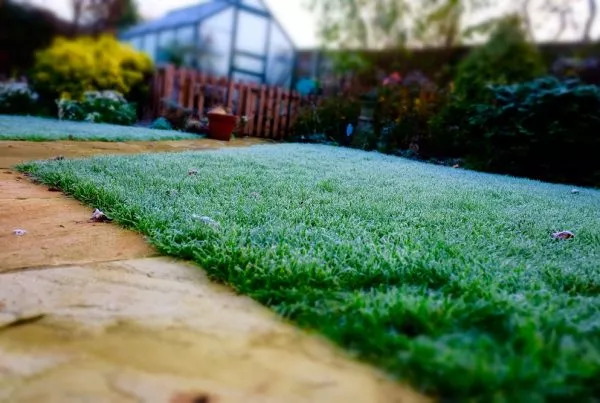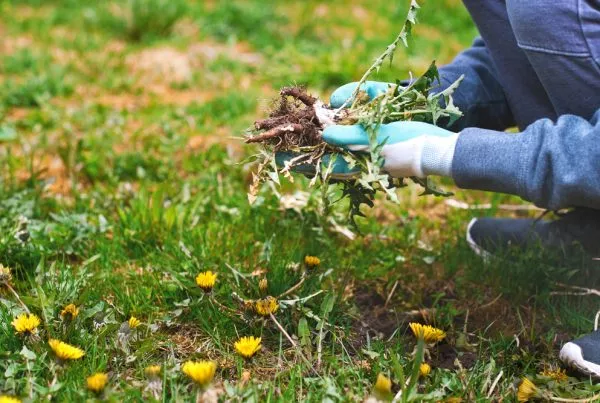Weeds! Most of us find them a real pain to deal with. Especially when they prove stubborn to remove. Some weeds are quite attractive and may be less bothersome. Others can result in an eyesore in the garden if not dealt with effectively.
A recent poll on Facebook showed that weeding is the most hated garden job amongst our followers! And we don’t blame them. We’d all much rather be spending time enjoying our garden.
So in order to help, we’ve created a short list of five common British weeds you may find in your garden and what you can do about them.
Getting rid of those weeds!
- Dandelion
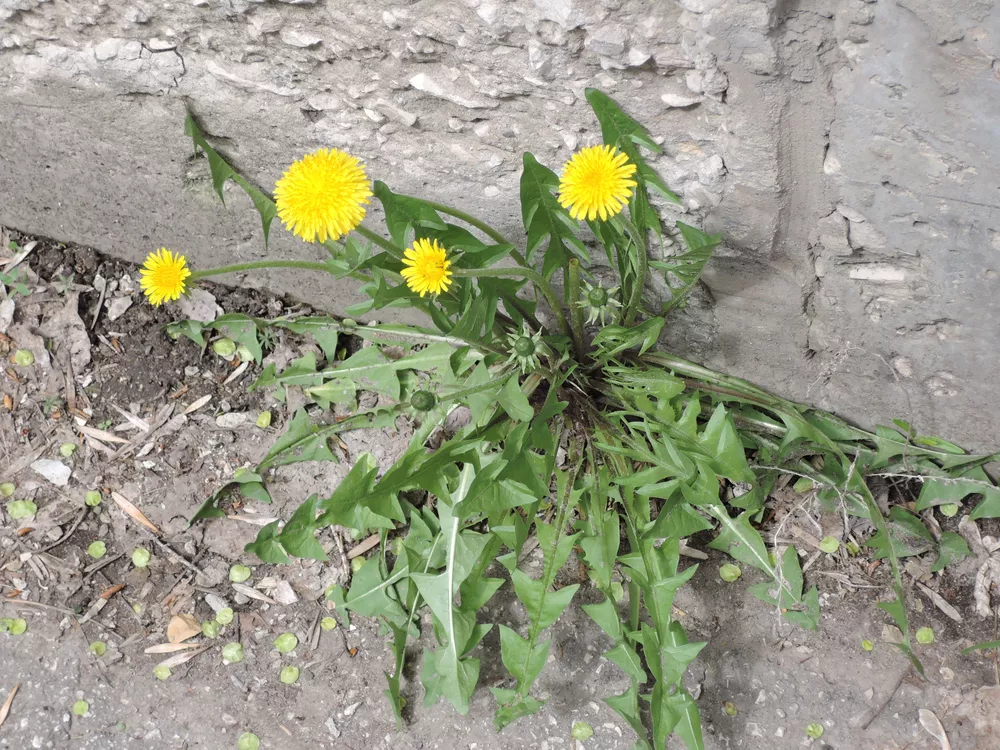
Dandelion’s are often one of the first plants to pop up after winter and provide early sustenance for pollinators such as bees. However, they can prove a bit of an eyesore. If you choose to remove them, this can be done with hand weeding. It is important to remove the root to avoid regeneration. When the soil is moist, take a small garden fork and slowly and carefully lift the area around and including the weed itself, before gently teasing the weed out.
- Couch Grass
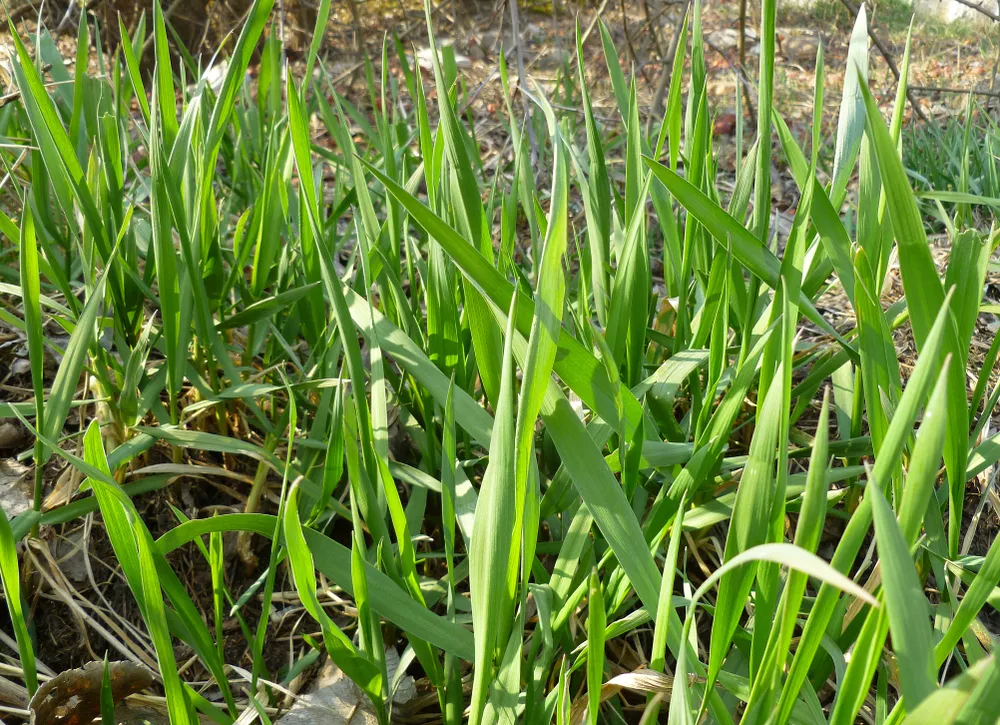
Looks a lot like regular lawn grass but thicker and taller. This weed can compete with your planted flowers for resources, resulting in a poorer yield. To remove couch grass, make sure to Dig out all the roots and underground stems of this grass, especially at the edge of lawns. If couch grass is growing in plant beds, it’s easier to lift all the plants and tease out the weed from the root. Regular cutting of the grass with a sharp knife will further weaken and loosen the plant. If you would rather use a chemical method, use a systemic weedkiller in the spring and continue to re-apply every four to six weeks.
- Dock Leaves

Docks can be identified by their coarse, broad leaves. They are often found growing in fields, paddocks and large lawns. Docks are full of seeds that will spread happily if left untreated and plants can last up to fifty years. Given that they usually grow in grass, chemical treatment should be done carefully so as not to damage the surrounding grass. Tackle these weeds by using a weedkiller suitable for Docks. Do bear in mind that chemicals can be unsafe for pets, especially whilst wet. If you prefer to try and dig out your Dock, it’s best to do it early in the season when the ground is still moist. Dig deeply and carefully and try and pull out the weed by the roots. Not doing this may result in a handful of leaves that will easily regrow.
- Bindweed
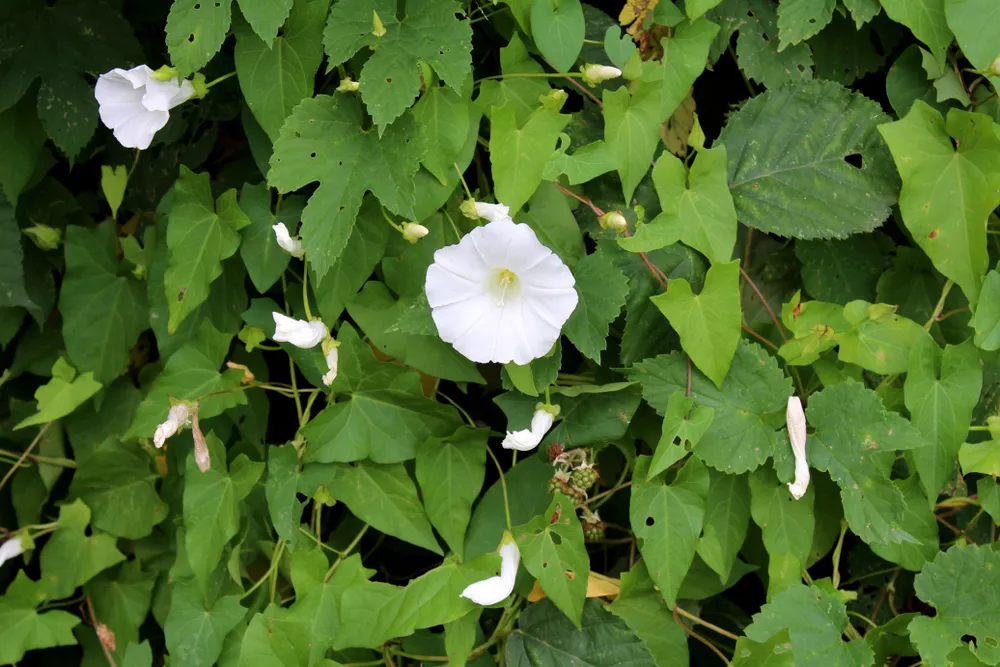
Identified by its heart-shaped leaves and white or pale pink trumpet-shaped flowers. Bindweed is often found in hedges, roadsides and borders. It is a perennial so will return if not eliminated fully. If you have bindweed growing among garden plants, you can put canes in the ground for the bindweed to wrap itself around. Once the bindweed has grown to a significant level around the cane, slip it off and into a plastic bag, leaving the roots in the ground. Apply the systemic weedkiller, glyphosate, and secure the bag with a clothes peg. Let it remain in the bag until the bindweed is dead.
- Enchanter’s Nightshade
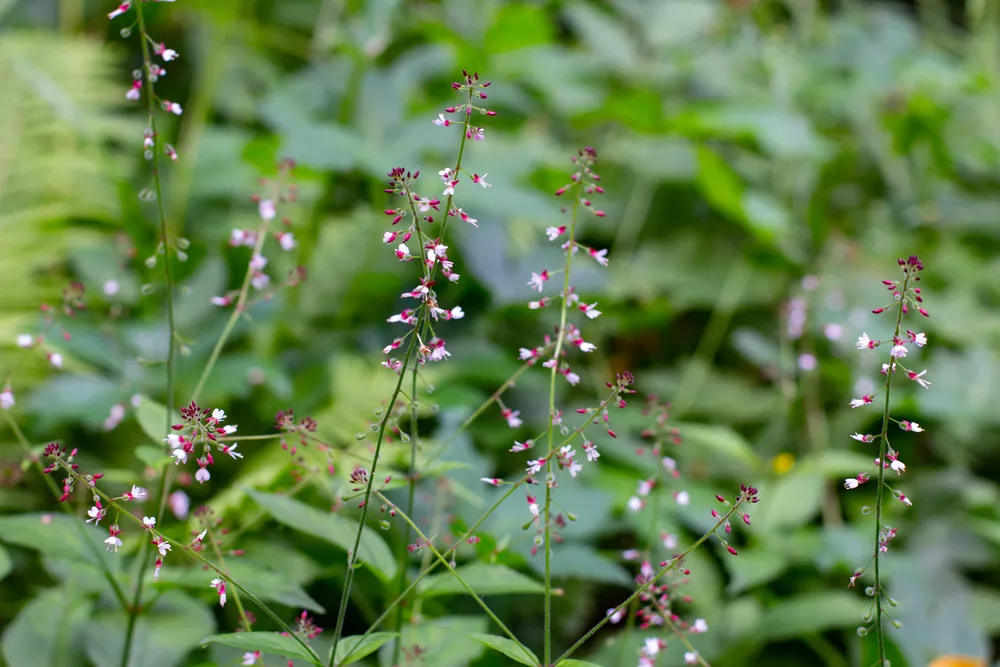
Despite its name, Enchanter’s Nightshade is not actually poisonous. However, it does contain a high level of tannins and so is considered inedible. Identified by its small white/pink flowers and oval leaves. Enchanter’s Nightshade is best tackled when in flower, usually summer, and can often be easily lifted from the soil.
Let us know if you’d like a part two for more pesky weeds you might find in your garden and how to get rid of them.
‘Til next week!
Jo
Follow us on Socials


